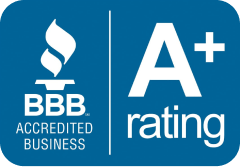Many seniors, non-elderly individuals, and children with disabilities rely heavily on Medicaid to pay for necessary medical care and LTSS. Access to full Medicaid eligibility based on age or disability is offered at the discretion of the state, but only for the core group of SSI users. Read this issue brief to learn about the most recent state-by-state data on Medicaid financial eligibility criteria and the adoption of important age and disability-related pathways (Figure 1). Also considered is the expansion status of each state under the Affordable Care Act (ACA) and how that affects each state’s decision to implement the optional age and disability-related paths. The results are based on a poll taken in all 50 states plus DC. The tables in the appendix provided in-depth information for each state. These are some of the most important results:
- The major optional Medicaid eligibility paths relating to age and disability have been adopted to varying degrees by different states, although state decisions regarding these pathways have remained steady since our last survey in 2015. Except for Alabama, every state has at least one state-plan-optional route to full Medicaid coverage due to age or disability.
- Many states have eliminated asset checks in certain “pathways,” but the income caps linked with such programs for the elderly and the disabled are still quite low. For those qualifying based on age or disability, the median income limit was 74% of the federal poverty level (FPL; $771/month in 2019); for those qualifying based on medical need, the limit was 48% of the FPL ($500/month); and for working people with disabilities, the limit was 250% of the FPL ($2,602/month). The Katie Beckett state plan option, or a comparable waiver, covers children with serious disabilities regardless of family income in all states except Tennessee.
- Compared to non-expansion states, a higher percentage of states that have accepted the ACA’s Medicaid expansion have also accepted crucial optional routes related to aging and disability. In general, neither expansion nor non-expansion states has reduced their age- or disability-related paths since our last study in 2015, and neither have they expanded their eligibility for these pathways.
- Every state chooses some path to increase Medicaid long-term care insurance coverage. Financial eligibility requirements for HCBS in a few states are more restrictive than those for institutional care and may be linked with the latter to reduce programmatic bias and improve community inclusion. However, most states use the same regulations regardless of the care setting. As mandated by the Affordable Care Act’s Section 2404, nearly all states are implementing the spousal impoverishment standards to HCBS; these regulations safeguard certain income and assets to support a spouse while an individual receives Medicaid LTSS. Five states have already announced they will reduce or end their implementation of Section 2404; more states may follow suit if Congress does not renew the provision before September 30, 2019.
- Low-income Medicare recipients can have their out-of-pocket expenses covered in full or in part by Medicaid through Medicare Savings Programs (MSPs), which are available in every state. While nine states have chosen to remove MSP asset limits, most states do not increase MSP financial eligibility beyond federal minimums.
- More and more states are deciding to use the ACA’s simplified eligibility renewal provisions for age and disability-related pathways, which can help keep eligible people on their plans and improve continuity of care. Thirty of these jurisdictions now employ prepopulated forms to speed up eligibility renewals, and another 43 provide review periods for these avenues.
Medicaid eligibility for the elderly and the disabled will continue to be a key area to monitor as state and federal policy decisions are made. In general, states’ options for age- and disability-related optional paths have remained consistent as additional states have implemented the ACA Medicaid expansion. Recent legislation in Louisiana and Tennessee seeks to increase coverage for children with substantial disabilities. If Congress lets Section 2404 of the Affordable Care Act expire this fall, states may be forced to roll down spousal impoverishment standards for HCBS while leaving them in place for institutional care, potentially jeopardizing their efforts to advance community integration. In addition, the federal government is now debating whether or not to alter the inflation index used to calculate the yearly federal poverty threshold, which might have repercussions for Medicaid eligibility in age and disability-related routes. Reduced annual increases in Medicaid income restrictions based on the FPL would eventually lead to fewer persons qualifying for Medicaid if the poverty line were adjusted using a lower inflation index than the current one. To what extent seniors and persons with disabilities will be able to achieve and retain Medicaid coverage and access to critical preventative, physical, mental health, and long-term services and supports will be affected by these and other policy changes in the coming years?








